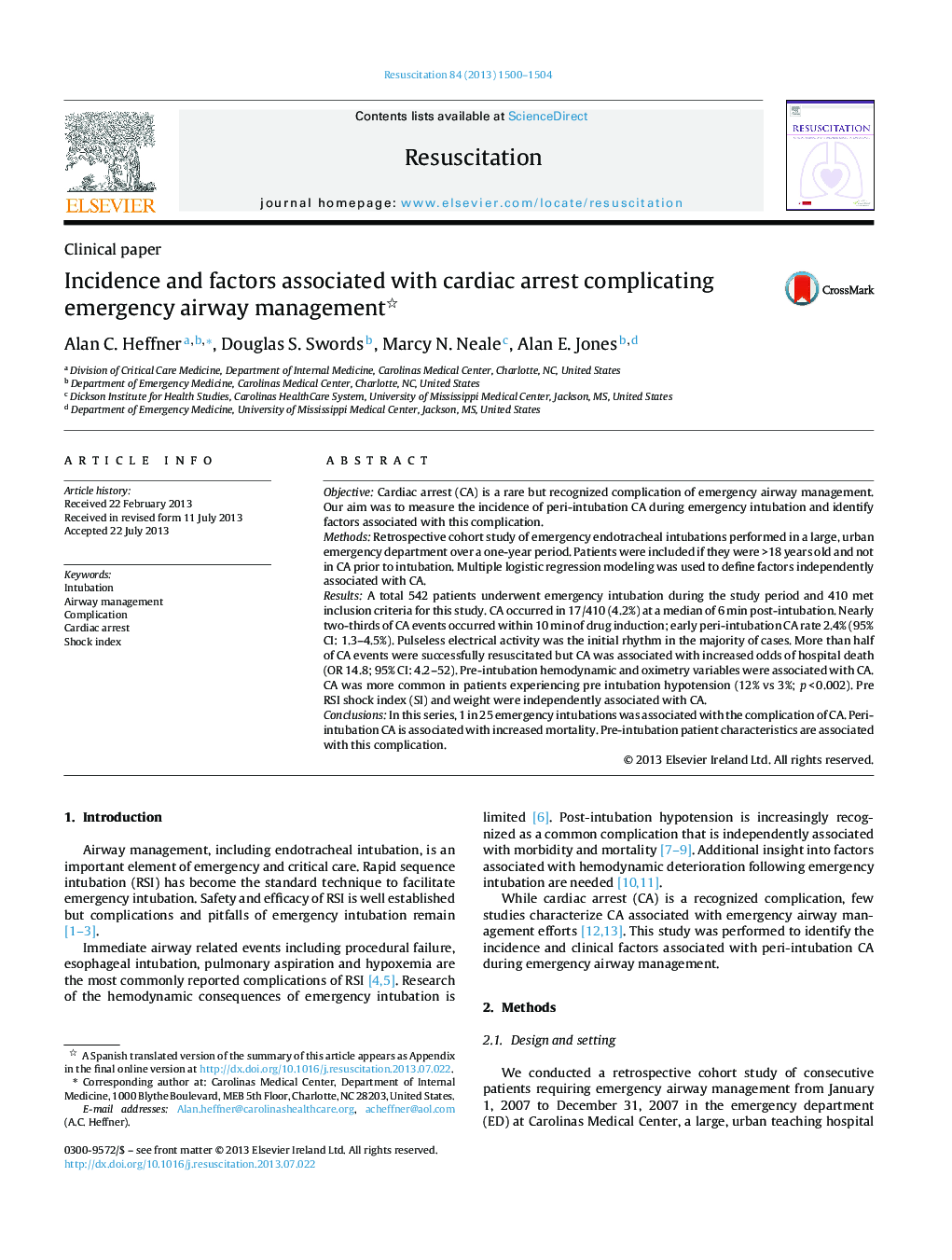| Article ID | Journal | Published Year | Pages | File Type |
|---|---|---|---|---|
| 5998962 | Resuscitation | 2013 | 5 Pages |
ObjectiveCardiac arrest (CA) is a rare but recognized complication of emergency airway management. Our aim was to measure the incidence of peri-intubation CA during emergency intubation and identify factors associated with this complication.MethodsRetrospective cohort study of emergency endotracheal intubations performed in a large, urban emergency department over a one-year period. Patients were included if they were >18 years old and not in CA prior to intubation. Multiple logistic regression modeling was used to define factors independently associated with CA.ResultsA total 542 patients underwent emergency intubation during the study period and 410 met inclusion criteria for this study. CA occurred in 17/410 (4.2%) at a median of 6 min post-intubation. Nearly two-thirds of CA events occurred within 10 min of drug induction; early peri-intubation CA rate 2.4% (95% CI: 1.3-4.5%). Pulseless electrical activity was the initial rhythm in the majority of cases. More than half of CA events were successfully resuscitated but CA was associated with increased odds of hospital death (OR 14.8; 95% CI: 4.2-52). Pre-intubation hemodynamic and oximetry variables were associated with CA. CA was more common in patients experiencing pre intubation hypotension (12% vs 3%; p < 0.002). Pre RSI shock index (SI) and weight were independently associated with CA.ConclusionsIn this series, 1 in 25 emergency intubations was associated with the complication of CA. Peri-intubation CA is associated with increased mortality. Pre-intubation patient characteristics are associated with this complication.
